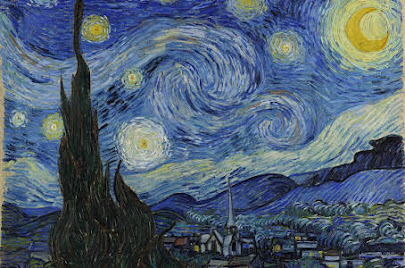STEAM & Arts Integration / Minilessons (Emma, Lingzi, Cayla)
What is new about the STEAM approach to Arts integration that is different from what most teachers think arts integration is? Explain
Lesson Plan: Basic Photography
Volume: Volume III
Subject: Visual Arts
Level: Middle
Grade: 6
Component: III Studio Skills
Objectives:
- Creates original photographs using elements of art and principles of design. (VA.A.1.3.3) (VA.B.1.3.4)
- Uses a controversial issue to create two works of art that take opposite positions, paying attention to design aspects that help emphasize each position. The students then analyzes the two positions. (VA.B.1.3.2)
Competency:
- The student knows how different subjects, themes, and symbols (through context, value, and aesthetics) convey intended meanings or ideas in works of art. (VA.B.1.3.1)
Materials
- Phone or camera
- Any object or nature around them
Activity
- Students will find objects or nature around them that they believe oppose each other: whether with the color, the brightness, the concept, etc. They can either take one picture of the two items next to each other or they can can two separate pictures of the items. Students will have 5 minutes to find the objects they want to photograph and will come back to class with their pictures. Students will be split up into breakout rooms of four people for 4 minutes to discuss their opposing images. Once back in class, there will be a discussion in which students can volunteer to share the pictures they took.
Assessment
- Students will be asked to complete an exit ticket. They should title the picture(s) they took and post to blackboard with one sentence describing what their picture represents.
Lesson Plan
TAL324
Subject: Yoga History
Grade:1
Component: Yoga History-Ashtanga Yoga
Objective: To make my students relax their muscles through yoga dance and get the better understand of yoga history.
Materials: Yoga mat.
Competency: Try to let students learn the history and gestures about Ashtanga Yoga.
Activity: Instructor showing students a pre-prepared slide. Then engage them to discuss with group members.
Assessment: engaging cognitive and relaxing the muscles.
Beliefs: To make my students relax.
One Classroom Rule: Respect to yourself and respect to others.
(Schedule)minute to minute:
I will teach the yoga history dance class to my students on November16. (20minutes)
Class Procedures
1. Entering the room: Enter quietly and politely, and do not interrupt my students.
2. Beginning the day: Warming up with my students. Tring to use an energetic rhythm to weak up my students.
3. Moving in a line: Let my students to stand in a line and ask them to do their own movements with the music beats and rhythm. This will help them warm up, and more concentrate in our following class.
4. Teaching the theories about the yoga histories: Explaining the purpose of the yoga gestures theories, so that their can do the yoga gestures in an appropriate and correct ways. This can ensure their safe. Protect them do not hurt themselves.
5. Be in group works: Ask my students to form in groups. They can learn from each other’s. They can also create their own yoga movements. But after they show me their own movements, I need to ensure the movements are safe and convenient. Making sure they cannot hurt themselves.
6. Watching the short video: Watching a short video about the Ashtanga Yoga. Showing them what is the Ashtanga Yoga looks like.
7. Getting into work groups: Take all the materials you will need; greet each other; complete the task doing your personal best; make sure each person signs the project; thank the others in your group.
8. Discussion: Students need to give some feedbacks to others performances and exchange their own opinions.
9. Conclusion: Making a conclusion about today's class. Review things we learn from this class.
Positive consequences: Releasing the stress. Free participation of students. (5 minutes)
The finale: After taking my class, students will feel more relax through their schoolwork’s. They will have the better concentration in any kind of classes.
Cayla Dious
Volume: 1
Subject: Language Arts
Level: Middle
Grade: Sixth Grade
Component: Literature/Reading
Objectives: Reads and creates literary forms such as poetry.
Competency: The student can identify what a Haiku is and create their own.
Materials: Powerpoint, break out rooms
Activity: Students will read examples of Haiku’s and then go into breakout rooms and create their own Haiku on any topic.
Assessment: Students will share their Haiku’s in front of the class if they would like. They also must post their Haiku on the Blackboard Discussion Board.
-------------------------------------
TAL 324 G
Isabella Freeberg
Isabella Freedberg Lesson Plan
Professor Morejon
November 15, 2021
Warm-up:
· Neck stretches, toe touching
Subject:
· Different elements of art within the environment
Grade
· Second Graders
Title
· Seven Visual Elements of Art
Component
· Aesthetic & Critical Inquiry
Objective
· Broadens descriptive vocabulary about visual qualities in art and the environment (V A.D.1.1.1)
Competency:
· Through the critique process, the student uses analytical vocabulary in verbal and written form to describe the elements of art and principles of design. (V A.D.1.1.1)
Materials:
· Worksheet, Paper, Pencils, Markers
Activity:
· Have students fill out a worksheet where they will have to describe the visual elements they see in the pictures provided.
Assessment:
· Have students create a drawing of something in nature and the environment representing all of the visual elements to demonstrate their knowledge of each.

Comments
Post a Comment